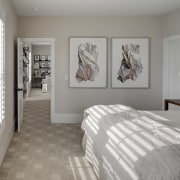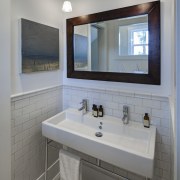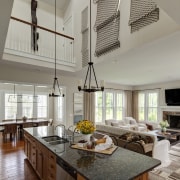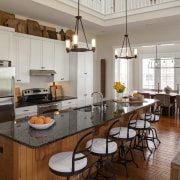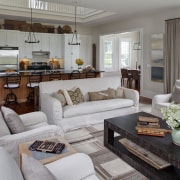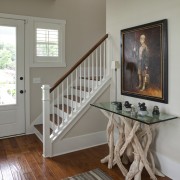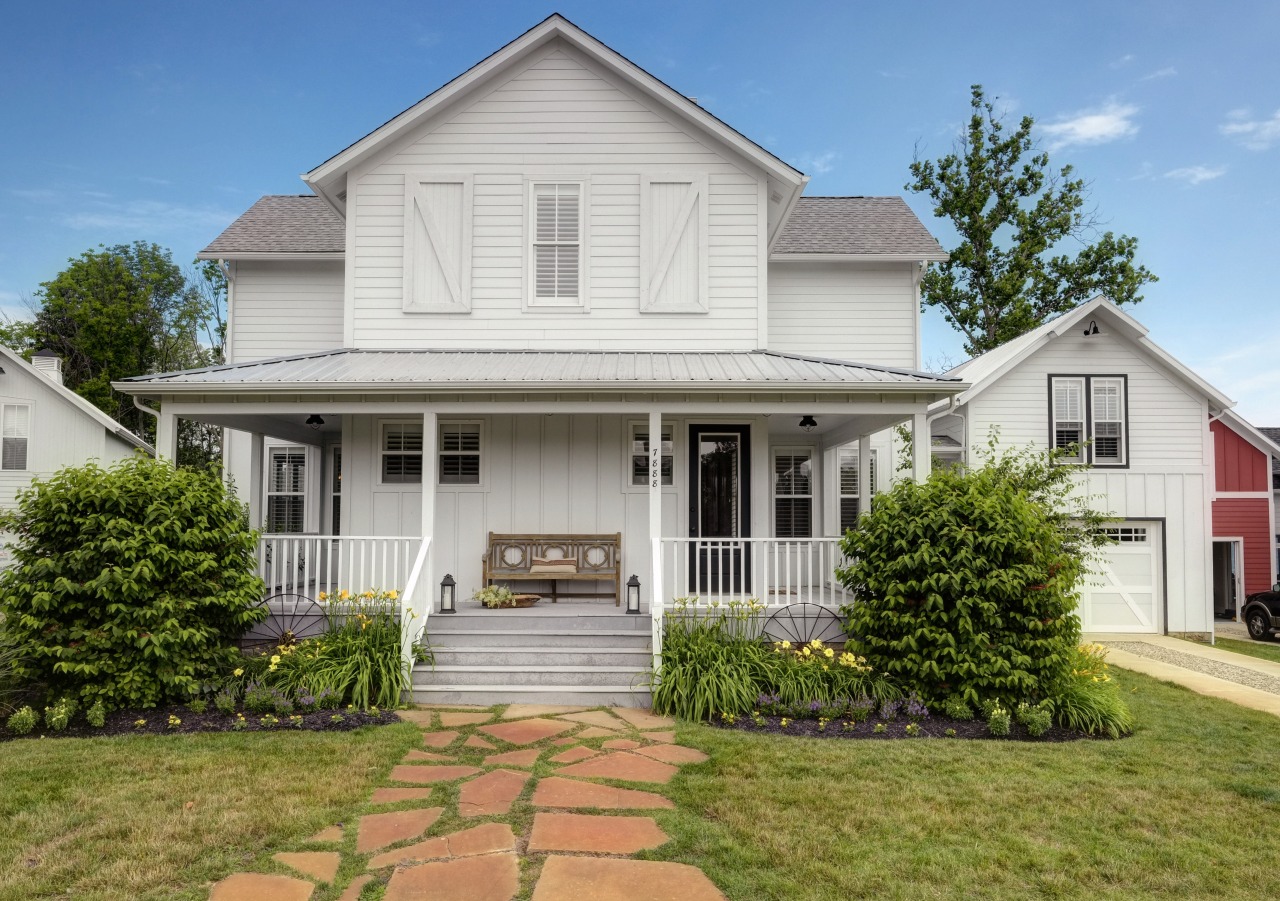Wooden, Amish-style new home by Soucie Horner
This Amish-style house by Shea Soucie offers easy connectivity
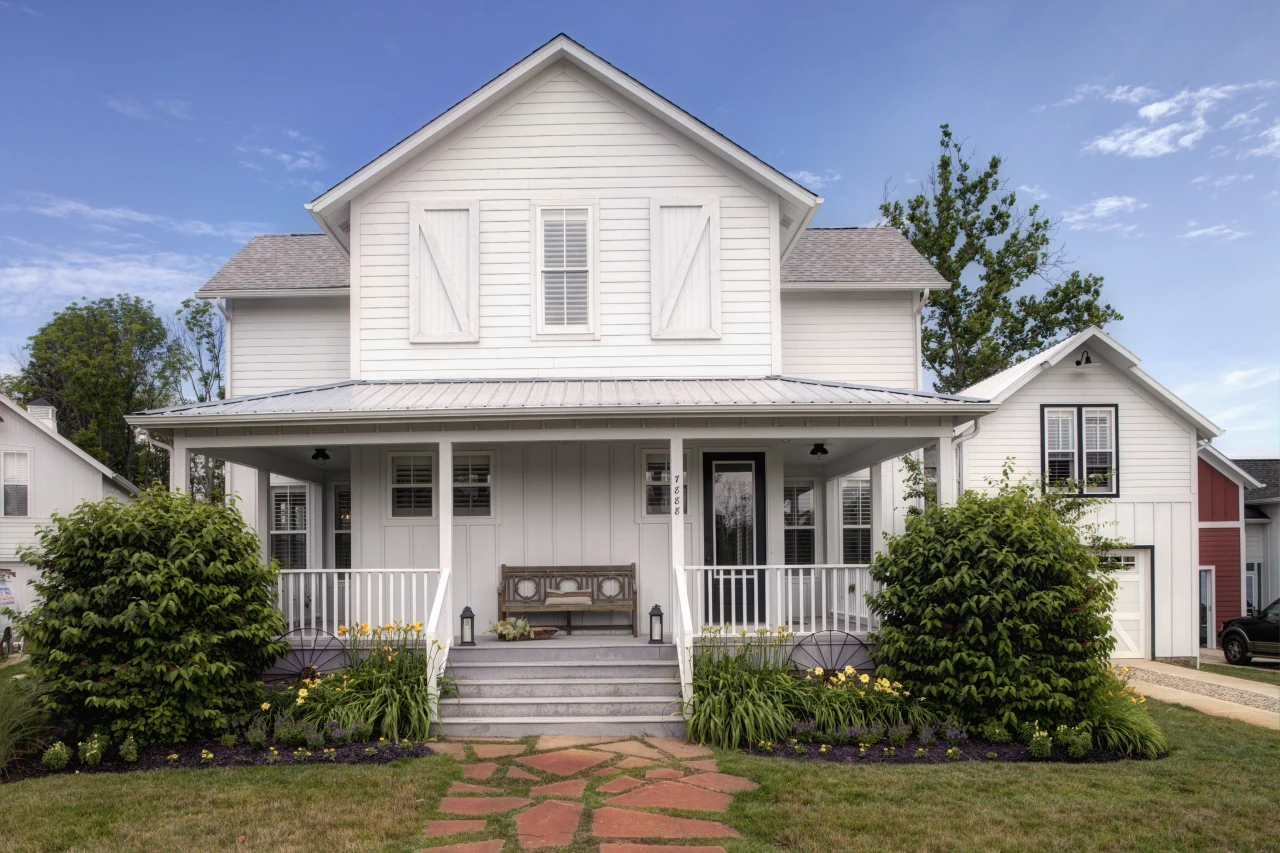
When you work all week in the city, you want to make the most of the tranquil surroundings at your rural retreat. In design terms, this could mean anything from emphasising an easy indoor-outdoor flow, to echoing the lines of the neighbouring architecture.
When designer Shea Soucie of architectural interiors firm Soucie Horner was asked to create a concept for a development of lakeside cottages in Indiana, she took her lead from nearby houses. There are 75 Amish farms in the surrounding area the largest such community outside of Ohio and Pennsylvania.
Whether ultimately used as holiday homes or family residences, it was important to build in a sense of community, says Soucie.
"We evoked the Amish style to complement the surrounding farmhouses, and because the traditional front porch is conducive to social interaction and enjoying the outdoors."
To achieve the right look, the houses have tall, narrow windows, generous front porches and a mixture of board-and-batten and weather-board facades. They all feature gabled roofs and a strong sense of symmetry. Most are painted plain white. Garages are designed to match the homes, and resemble an Amish barn. Linked to the house by a covered walkway, and with the same elongated windows, each has an entrance that looks like a barn door, and a hip roof a classic barn-like characteristic.
The templated designs on the development can be tweaked to personal taste. In the house featured here, the garage has a bunkroom that sleeps 12 on the second floor, and an expansive conservatory to the rear that overlooks the lake.
From the exterior, the house appears to have three storeys; however, the top floor is really for architectural balance and aesthetics. While in some houses there is a study on this uppermost level, in this one it is open to the rooms below and acts as a windowed cupola, drawing natural light into the interior. This has the added benefit of creating an airy double-height space directly over the kitchen, which is the anchor point of the open-plan spaces, says Soucie.
"In an idyllic setting, a house is much more about the exterior and surroundings you don't go to the country to sit indoors. That said, easy interior connections are essential for a relaxing experience, so the classic Amish exteriors give way to contemporary open-plan living."
An understated entry into the home creates drama, especially in light of the volume and height of the living areas that follow. The great room, kitchen and dining room are all open to each other, and to an atrium gallery on the second level, which in turn opens to the three bedrooms and a study. In a house that is frequently used for entertaining large numbers of family and friends, this interconnectivity is a major design plus.
"What makes this home even more suitable for entertaining is its ability to offer privacy, as well as bring people together," says the designer. "For example, the entry to the conservatory is from the back garden, giving this space a sense of separation. In the same way, the bunkroom over the garage is the children's domain.
"However, while the layout meets the needs of modern family life, the interior design continues the simple Amish aesthetic, with a limited palette of colours and materials."
Hand-scraped hickory wide-plank boards used for the flooring add to the cottage-style atmosphere. A brick fire surround in the great room includes a sunburst pattern, a motif repeated elsewhere in the residence. Beadboard ceilings feature in the outlying spaces, such as the conservatory and the bunkroom.

There is some transitional detailing, but there are no crown mouldings nothing overtly fussy that would detract from the form of the home or from the lakefront setting. For the same reason, the paint scheme is an understated French grey with white trim.
These colours are carried through to the upstairs as well, but here floors are carpeted for a more pampering feel.
"Simple rusticity was the theme for the soft furnishings, too. A muted Belgian linen was selected for all the upholstery, bedding and drapery, ensuring none of these would detract from the views of the woods, lake and birdlife, which are the real features of the home," says the designer.
Soucie also extended the farmhouse theme by sourcing several authentic local accessories. Most prominent are the conveyor tracks from farm machinery that decorate the double-height space above the kitchen and a wall of the study at the top of the stairs.
"Everything about this home reminds you that you're out in the country, far from the city."
Credit list
House design concept
Cabinet company
Siding
Flooring
Furniture
Countertops
Faucets
Story by: Charles Moxham
Home kitchen bathroom commercial design
US Home & Architectural Trends Vol. 30/2
Home & Architectural Trends highlights great residential architecture. This book provides prospective home builders ...
Read More
